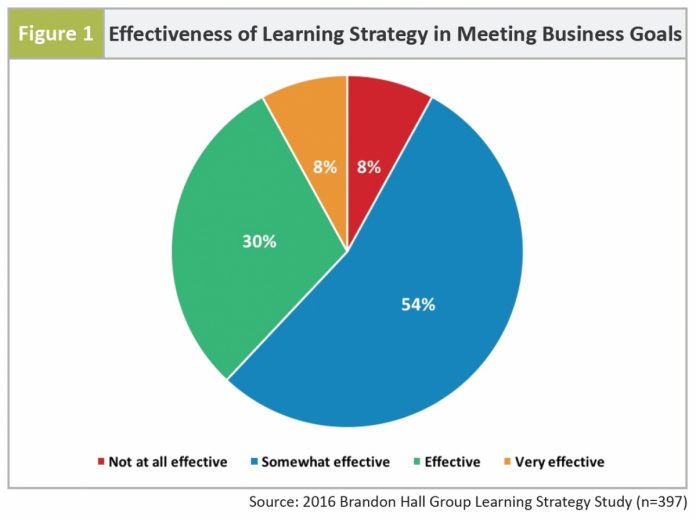
Organizations continue to struggle with developing a solid learning and development strategy that has a genuine impact on the business. This challenge leaves many companies without the guidance necessary to design, develop and deliver effective learning programs that boost individual and organizational performance. In fact, 14 percent of companies overall say they have no L&D strategy at all, according to Brandon Hall Group’s 2016 Learning and Development Strategy Study.
However, the simple presence of a learning strategy does not mean that all is well. Among those companies that have a strategy in place, the majority don’t believe the strategy is all that effective in helping achieve business goals.
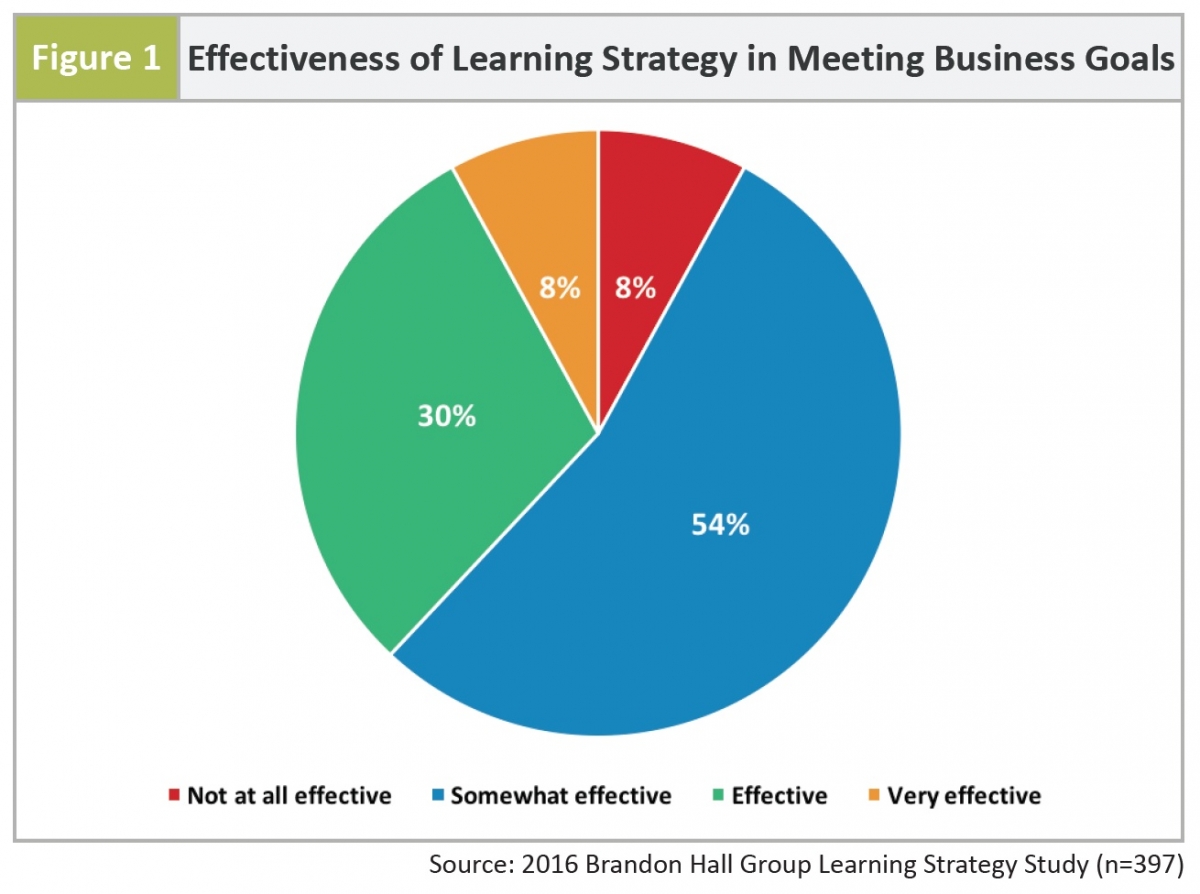
Less than 8 percent of companies with an L&D strategy would call it “very effective,” and less than one-third even call it “effective.” This does not mean the programs themselves are not effective in delivering learning, or that employees are not acquiring new knowledge. What it does mean, however, is that even if the execution is perfect, the strategy itself has little to no impact on the business. For these companies, a lot of the time, money, and energy spent designing and delivering learning is for nothing. As organizations continue to struggle with determining the return on investment (ROI) for learning, this is a troubling sign.
The good news is, most of these companies recognize they are strategically challenged when it comes to learning, and they are focused on doing something about it. The most important learning initiative is to align the learning strategy with the business. However, there are many competing priorities the Learning function needs to manage in order to be successful.
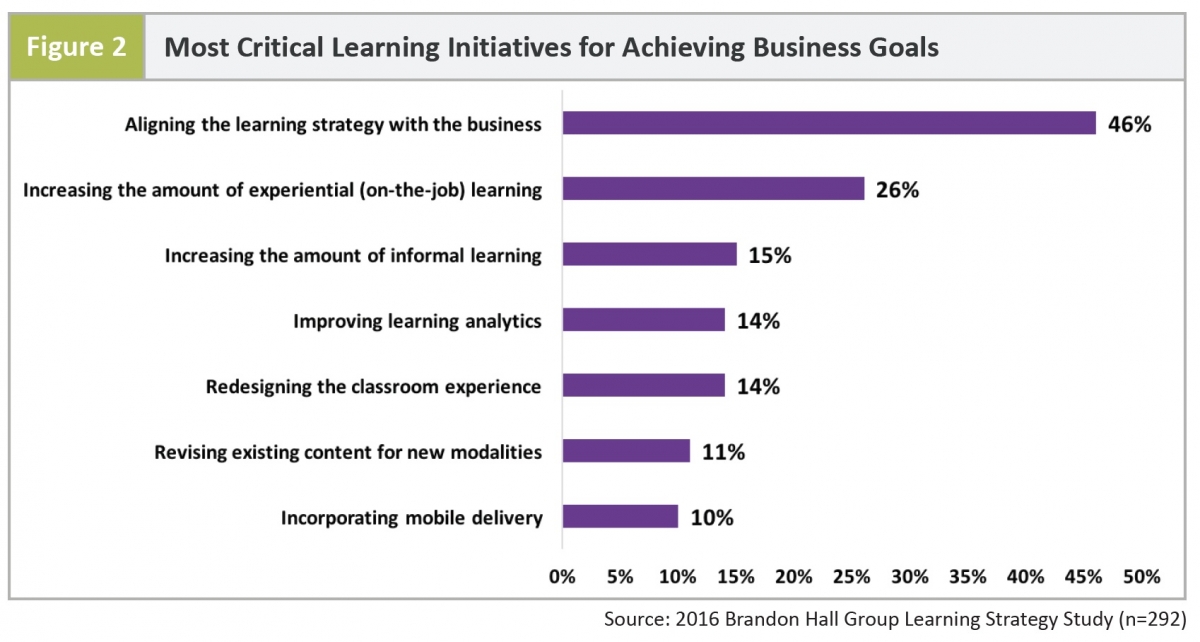
Aligning the learning strategy with the business was by far the most critical initiative cited by survey respondents. This indicates an understanding of the challenge at hand and a recognition that something needs to be done. A big part of solving this challenge can be found in the rest of the list in Figure 2. Part of executing on an effective learning strategy is providing a more blended learning environment that pulls experiences from all across the learning spectrum. The need to do this is clear from the fact that increasing experiential learning, increasing informal learning, and revising content for new modalities all rank in the top six.
Another indication that change is under way after years of discussion and exploration is the number of companies that are prepared to do something about these initiatives. More than half of companies say they are either ready to address or take action on aligning the learning strategy with the business. Many companies are similarly prepared to address the blended learning initiatives. What is perhaps most telling, however, is that high-performing organizations (HiPOs) are even more prepared than other companies. HiPOs are companies that have seen year-over-year improvement in a group of key performance indicators that include revenue, employee engagement, customer satisfaction, turnover, and organizational productivity.
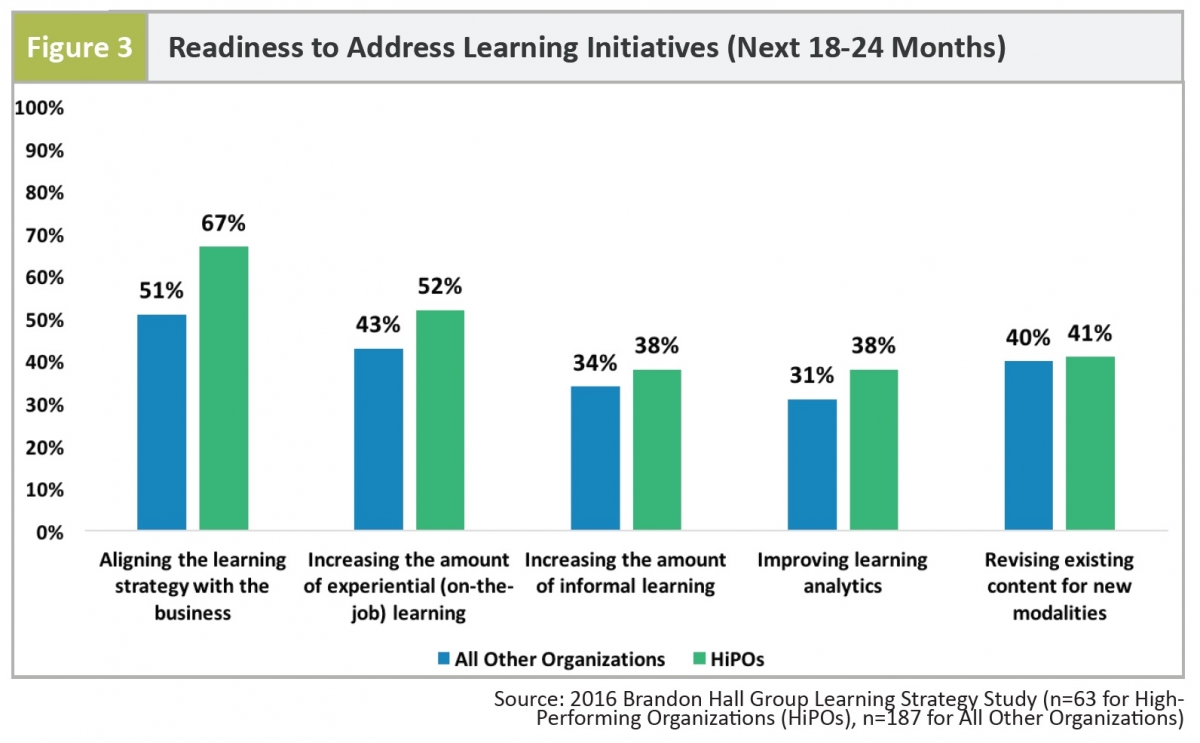
High performers are clearly in a better position to make these changes and move forward because they are far more likely to have an effective learning strategy already in place. We saw in Figure 1 that approximately 37 percent of companies overall said their strategy was either effective or very effective in helping achieve business goals. For HiPOs, that number is 66 percent. HiPOs are 78 percent more likely to have an effective L&D strategy.
Based on the 2016 Learning & Development Strategy Study, which garnered 439 responses from more than 20 countries and 35 industries, I have developed four critical calls for change, which I will discuss in the remainder of the article.
Critical Calls for Change
1. Establish a robust learning strategy.
As seen in Figure 1, approximately 37 percent of companies believe their learning and development strategy is truly effective in helping to achieve business goals. That means nearly two-thirds of companies with a strategy in place are not all that confident they are doing what they are supposed to do. We know this matters because of the correlation between high organizational performance and an effective learning strategy (Figure 4).
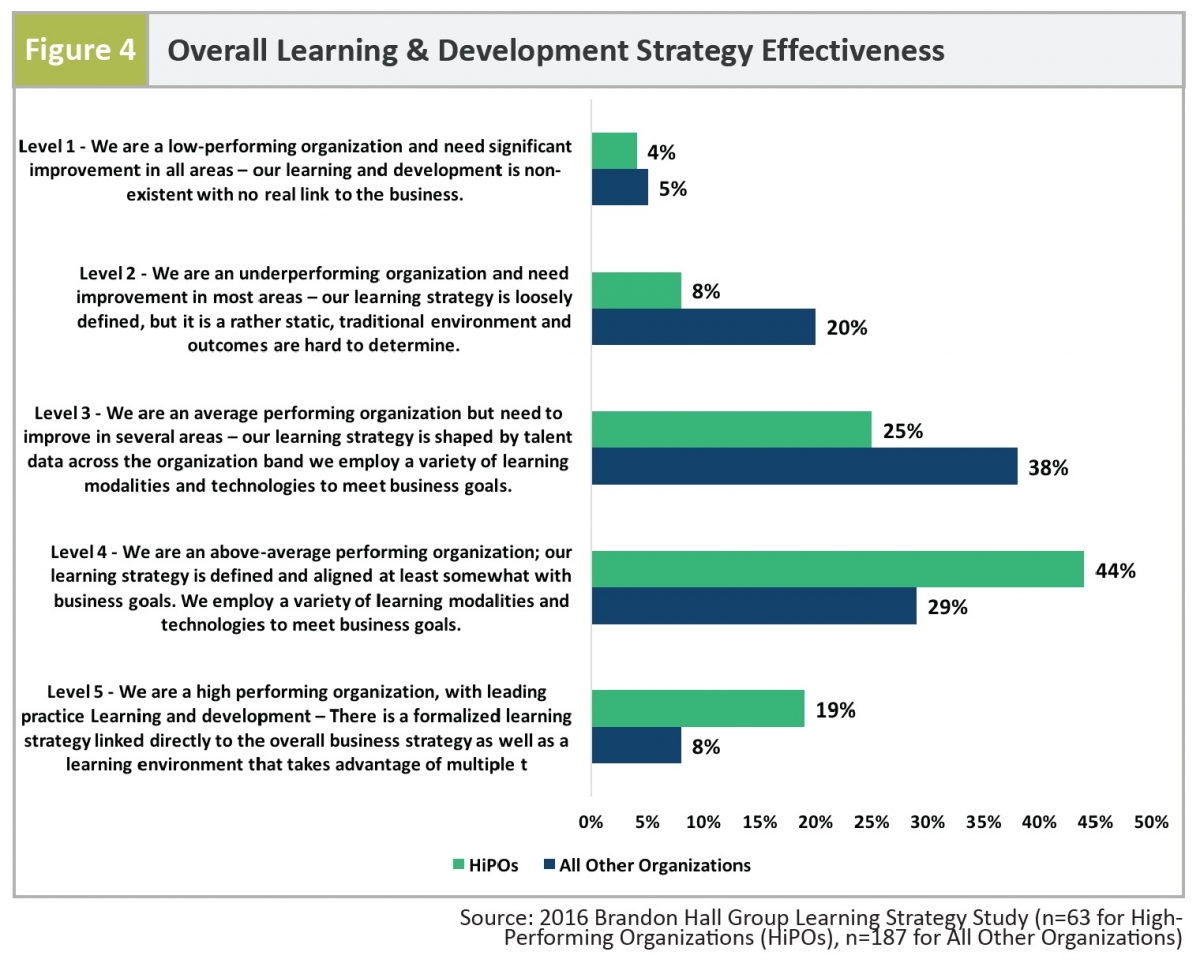
Nearly two-thirds (63 percent) of HiPOs see their L&D strategy as either above average or leading. Compare that with 37 percent of all other organizations. The results are clear: When the L&D strategy is well defined and aligned with the business, learning is much better positioned to have a positive impact on the performance of the business.
2. Identify critical skills and competencies.
In order for learning to be effective, there needs to be a set of critical skills and competencies the strategy can target. The majority of companies admit it is important to identify these skills and competencies, define the required capabilities for each of them, and design the learning content to meet these needs.
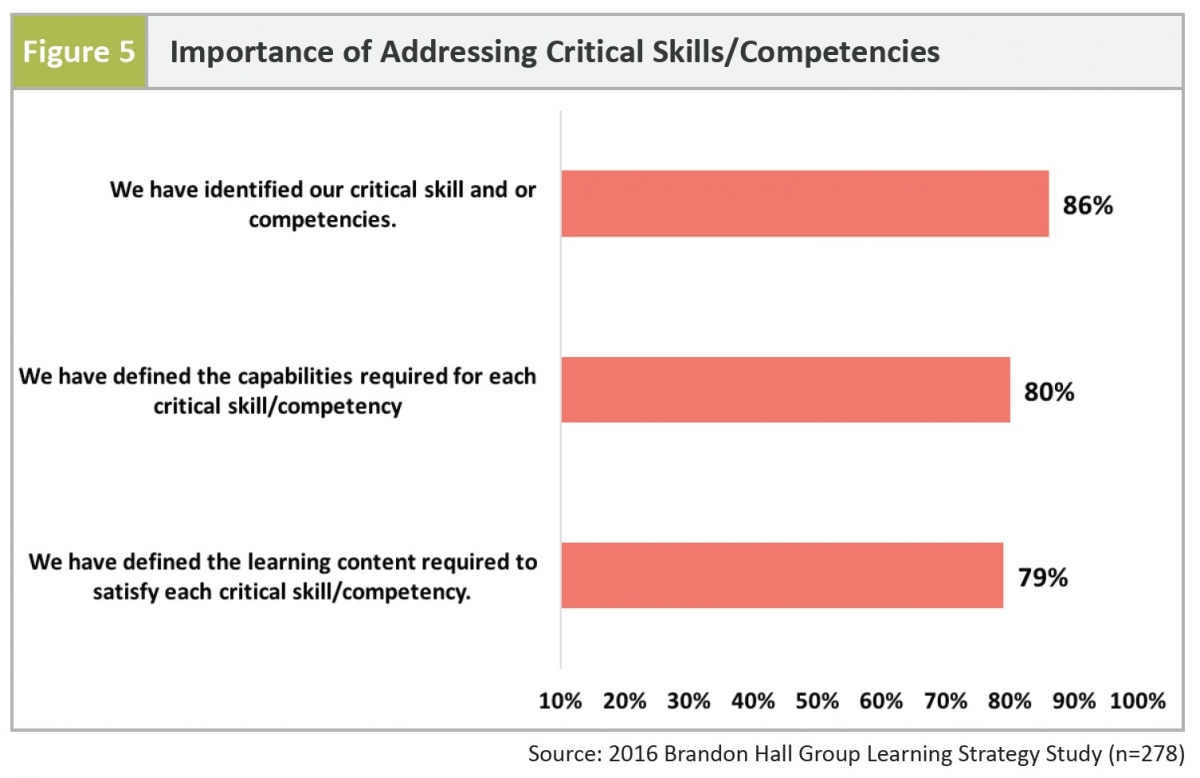
Despite the criticality of this part of the L&D process, few companies believe they are very effective at doing these things. Fewer than half of companies overall say they are at least effective at it, and only a select few believe they are very effective. However, we again see a correlation between high-performing organizations and addressing critical skills and competencies.
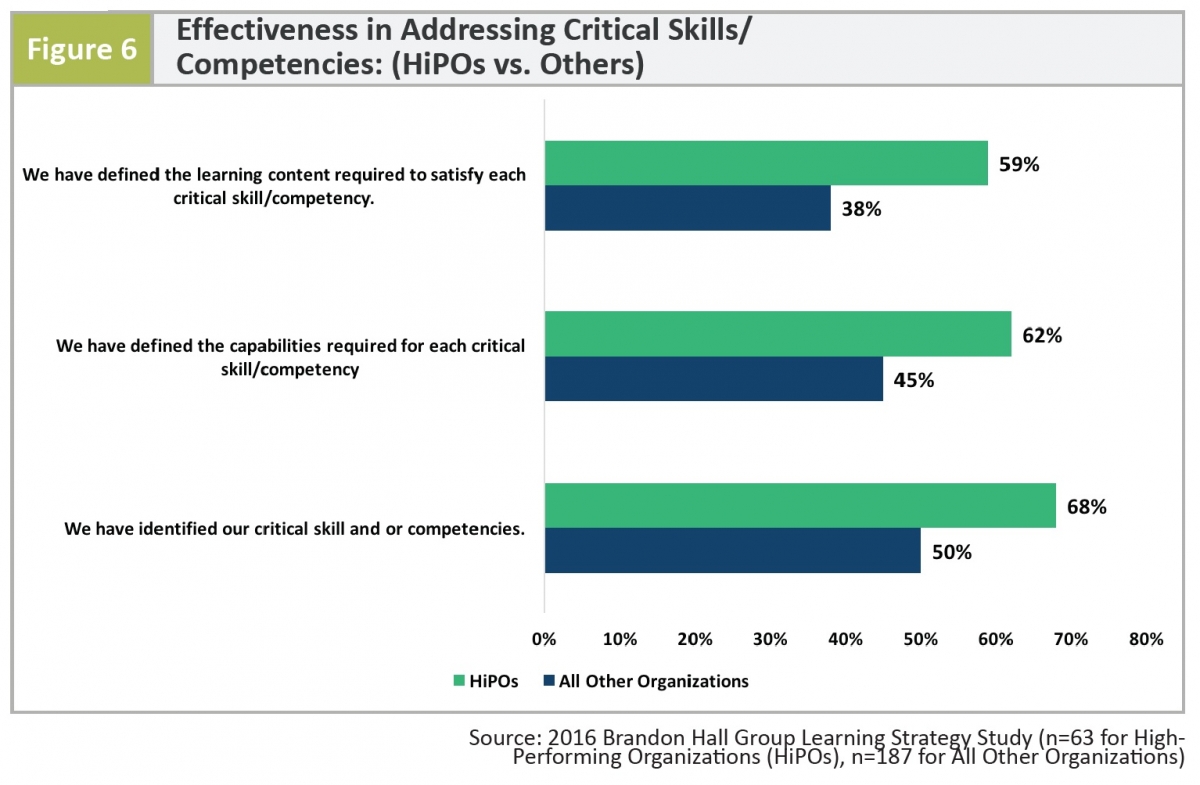
HiPOs are more likely to identify, define, and address skills and competencies more effectively. It is telling to note that the biggest gap (55 percent) comes when discussing the learning content required to make sure people have the critical skills and competencies they need. It indicates that even if you are able to identify what is needed, if you cannot execute, it is meaningless.
3. Create an environment with more frequent learning opportunities.
Without question, in-person instructor-led classroom training is the No. 1 way organizations deliver learning today. Yet organizations recognize the fact that people need to connect to learning relatively frequently in order to be effective at their jobs.
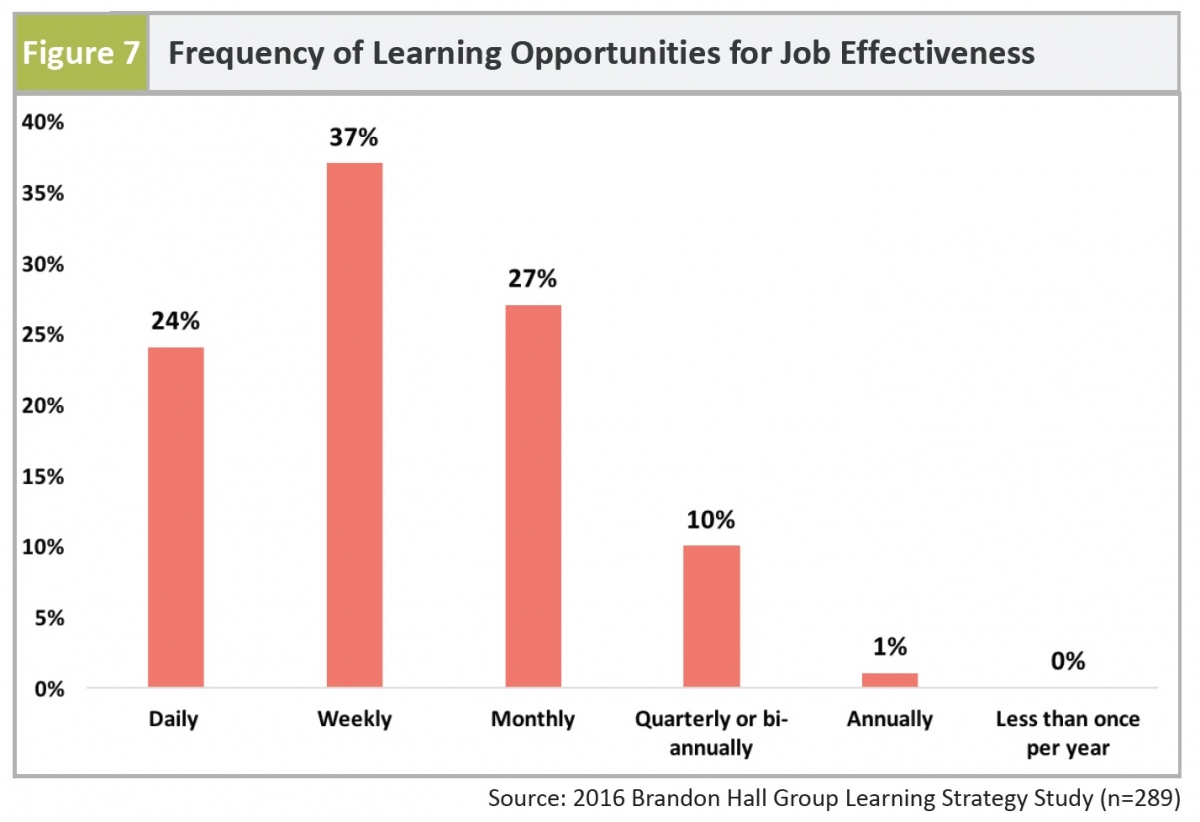
More than 60 percent of companies expect their employees to interact with learning resources weekly or daily. A learning environment that relies heavily or exclusively on classroom instructor-led training (ILT) or large-scale courses cannot possibly achieve this level of frequency. It would be difficult to deliver that kind of learning on even a monthly basis. This means organizations have to rethink their learning strategy to make learning more of an embedded activity that occurs as part of the normal workflow, rather than separate from it.
4. Facilitate more learning experiences outside of the classroom.
The research found that from a technology standpoint, companies are predominantly focused on exploring new learning modalities and delivering a truly blended experience. From an L&D strategy standpoint, organizations also are focused on a more blended, personalized learning experience. As we have seen throughout this study, HiPOs are taking the lead with this type of learning environment.
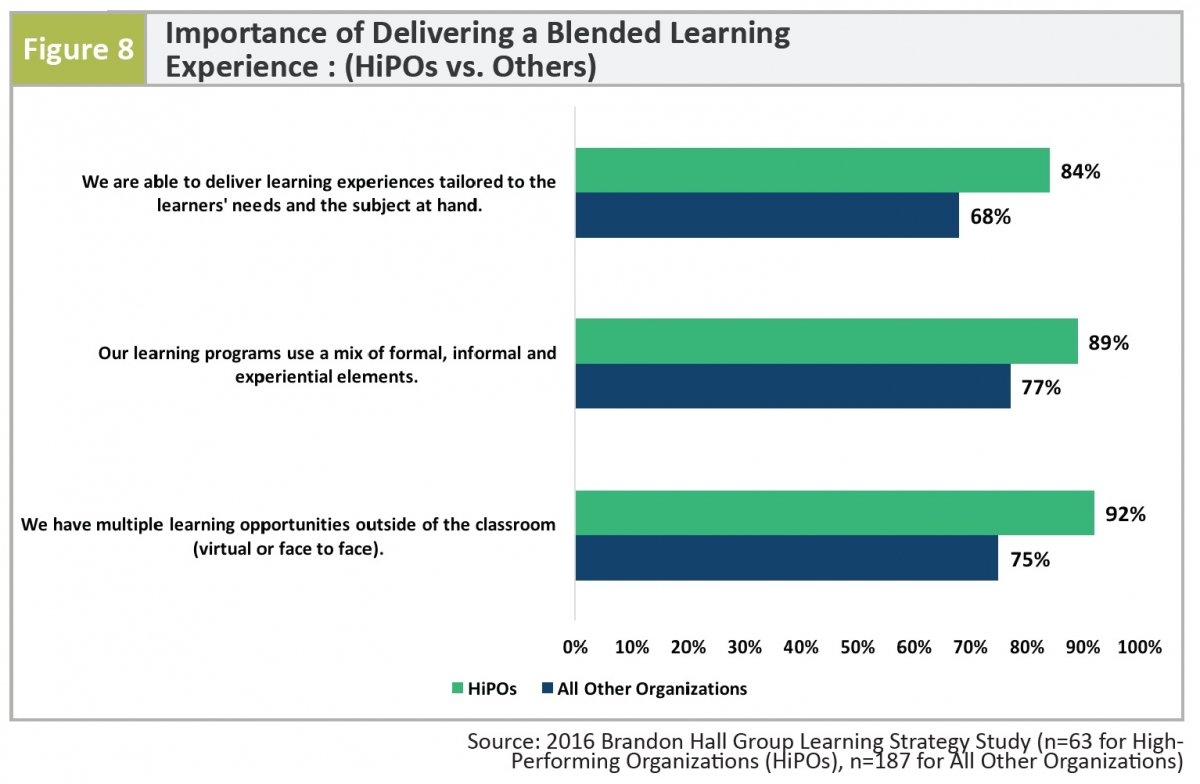
HiPOs see these types of learning experiences as more important to their success. Not only are they focused on blended learning outside of the classroom, but they are 23 percent more focused on delivering a personalized learning experience. Learning that is relevant to the learners’ needs is simply more engaging and more effective. And HiPOS are better at delivering on these concepts.
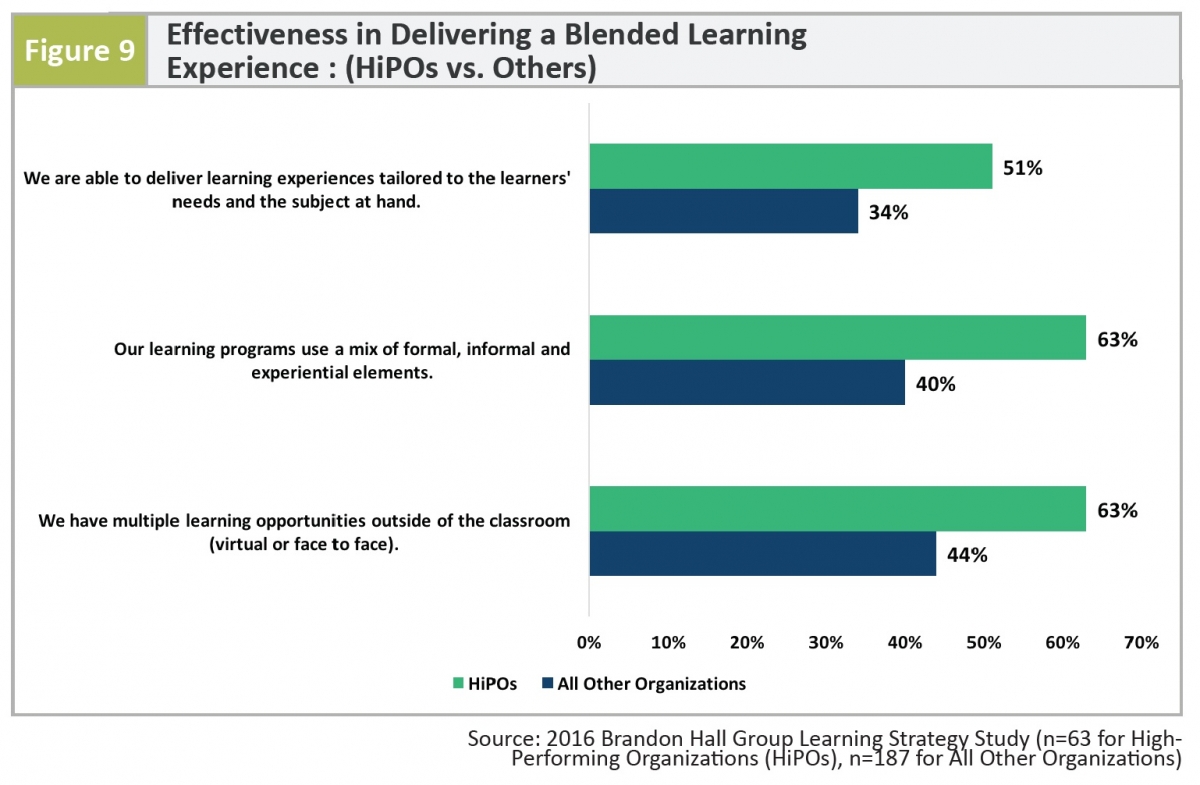
David Wentworth is principal Learning analyst for Brandon Hall Group, an independent human capital management (HCM) research and analyst firm, with practices in Learning & Development, Talent Management, Leadership Development, Talent Acquisition, and Workforce Management. The company also offers strategic consulting in all of its practice areas, sponsors the worldwide Brandon Hall Group Excellence Awards, and hosts the annual Brandon Hall Group HCM Excellence Conference Jan. 24-27, 2017, in Palm Beach Gardens, FL.




